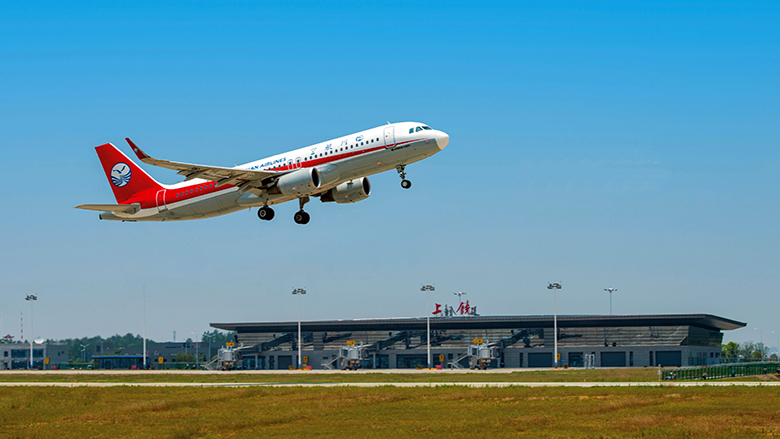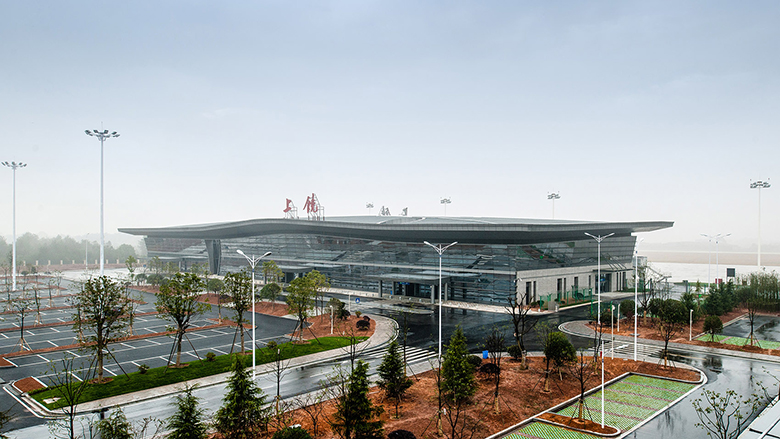Challenge
By 2013, China was the world’s second largest aviation market in terms of traffic volume, and air transport was the fastest growing mode of transport. However, the country was faced with considerable challenges, particularly in the development of feeder airports and aviation services, including poor connectivity with regional airports, poor operational efficiency, and low utilization.
Shangrao has rich tourism resources, such as Wuyuan (known as the "most beautiful countryside in China"), Mount Sanqing (a UNESCO World Heritage Site), and Poyang Lake (the largest freshwater lake in China). Construction of the Sanqingshan Airport was important for the economic development of Shangrao Municipality and northeastern Jiangxi. It has facilitated the growth of the region’s tourism resources and complemented the comprehensive transport system.
Approach
The project focused on three main areas: environment-friendly airport design and operation; economic and financial sustainability; and integration of transport modes. As the first civil aviation project financed by the World Bank in China, it introduced and implemented the “Green Airport” concept and was expected to serve as a demonstration model for the development of future feeder airport projects in China.
The World Bank project team assisted in the preparation of the Shangrao Sangqingshan Green Airport Design Guidelines, a technical study on the Shangrao Green Airport experience and lessons learned, two green airport workshops participated by around 150 representatives from Civil Aviation Administration of China (CAAC), other airports, and airport construction, consulting and engineering companies, and training of local project staff and stakeholders. Several international aviation experts were brought in to join implementation support missions or workshops to introduce global best practices.
Results
The Shangrao Sanqingshan Airport received construction completion acceptance in December 2016 and overall acceptance by the CAAC regional bureau in March 2017. The airport became operational in May 2017, with the Chengdu-Shangrao route made operational by Sichuan Airlines.
- By the loan closing date of December 31, 2018, Shangrao was connected to eight destinations: Beijing, Shenzhen, Qingdao, Huizhou, Chengdu, Zhoushan, Kunming and Harbin, as five commercial airlines gradually opened airline routes. Four additional cities were connected to Shangrao when two new routes were opened in early April 2019.
- Travel time between Shangrao and major destinations was reduced by 45% on average.
- The number of passengers reached 375,000 by 2018 and is expected to reach about 500,000 by 2020.
- Electric bus services were provided between the airport and the city center and railway station of Shangrao.
- Shangrao Sanqingshan Airport was recognized as a green airport, featuring energy efficient architecture and airport layout design, ground aircraft auxiliary power unit, energy efficient equipment and infrastructure, stormwater reuse system, and ground source heat pump system. It was awarded the EDGE (Excellence in Design for Greater Efficiencies) green building certificate in early 2019. According to the EDGE evaluation, the airport achieved 24% energy saving, 42% water saving, 38% building materials embodied energy saving, and 24% operational carbon dioxide saving.
- The new airport facilitated tourism. In 2017, the total revenue from tourism related activities in Shangrao reached RMB148 billion (more than US$21 billion), up 31.5% compared to 2016. The total number of tourists in Shangrao in 2017 reached 1.6 billion, up 30.3% compared to 2016. For the first time, Shangrao ranked in China’s Top 10 tourist cities in 2017. From May 2016 to October 2018, jobs in the tourism industry in Shangrao increased from 342,000 to 650,000.
- Rural tourism development in Shangrao was estimated to create 200,000 jobs in 2017; 126 of the 537 designated poor villages identified tourism-related jobs as their main way to escape poverty.

